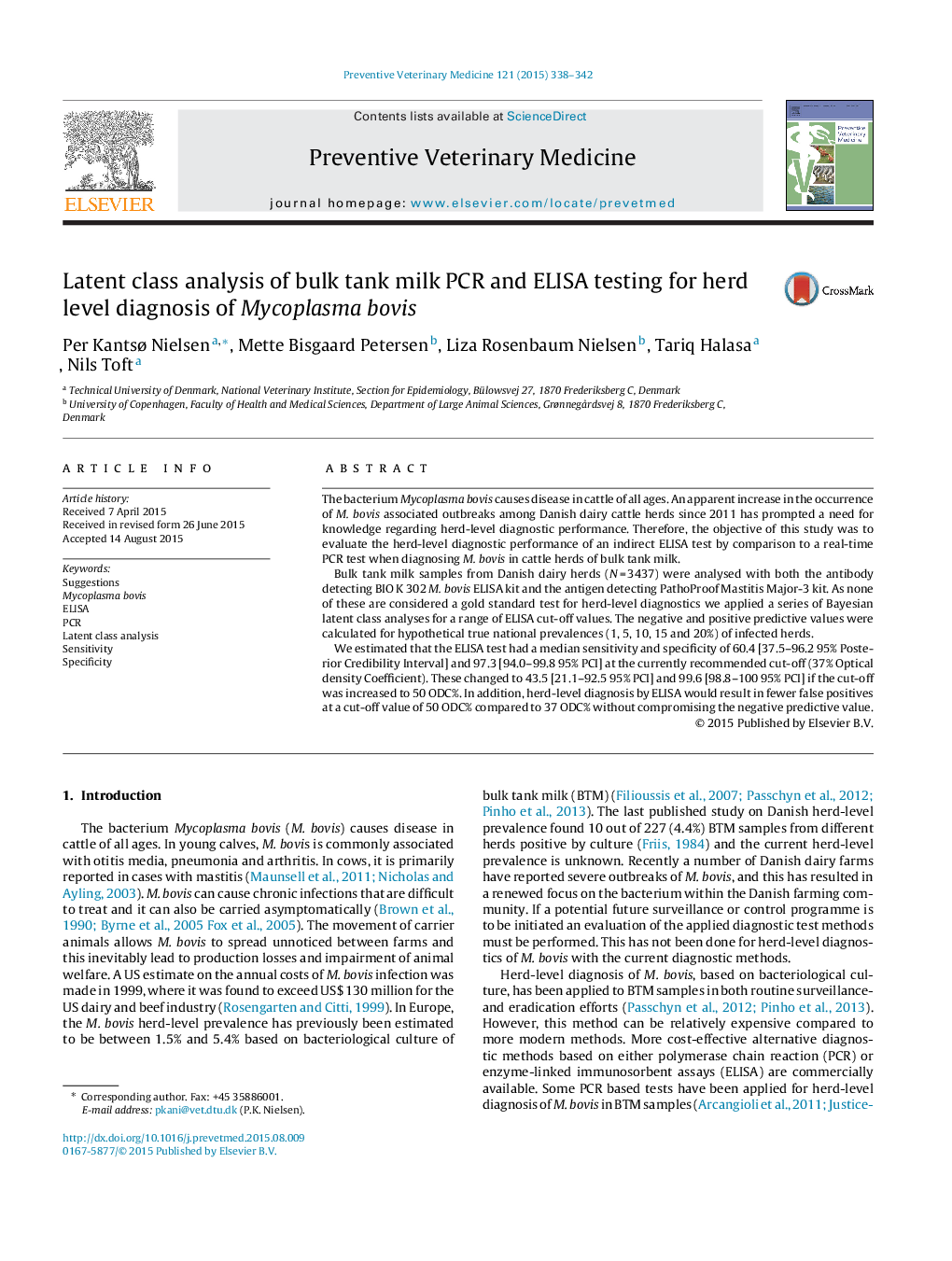| Article ID | Journal | Published Year | Pages | File Type |
|---|---|---|---|---|
| 5793219 | Preventive Veterinary Medicine | 2015 | 5 Pages |
â¢Bayesian latent class analysis was applied to compare two M. bovis diagnostic tests.â¢Using recommended cut-offs and herd-level, the ELISA was more sensitive than the PCR.â¢The ELISA positive predictive value improved if the cut-off was increased.
The bacterium Mycoplasma bovis causes disease in cattle of all ages. An apparent increase in the occurrence of M. bovis associated outbreaks among Danish dairy cattle herds since 2011 has prompted a need for knowledge regarding herd-level diagnostic performance. Therefore, the objective of this study was to evaluate the herd-level diagnostic performance of an indirect ELISA test by comparison to a real-time PCR test when diagnosing M. bovis in cattle herds of bulk tank milk.Bulk tank milk samples from Danish dairy herds (NÂ =Â 3437) were analysed with both the antibody detecting BIO K 302 M. bovis ELISA kit and the antigen detecting PathoProof Mastitis Major-3 kit. As none of these are considered a gold standard test for herd-level diagnostics we applied a series of Bayesian latent class analyses for a range of ELISA cut-off values. The negative and positive predictive values were calculated for hypothetical true national prevalences (1, 5, 10, 15 and 20%) of infected herds.We estimated that the ELISA test had a median sensitivity and specificity of 60.4 [37.5-96.2 95% Posterior Credibility Interval] and 97.3 [94.0-99.8 95% PCI] at the currently recommended cut-off (37% Optical density Coefficient). These changed to 43.5 [21.1-92.5 95% PCI] and 99.6 [98.8-100 95% PCI] if the cut-off was increased to 50 ODC%. In addition, herd-level diagnosis by ELISA would result in fewer false positives at a cut-off value of 50 ODC% compared to 37 ODC% without compromising the negative predictive value.
